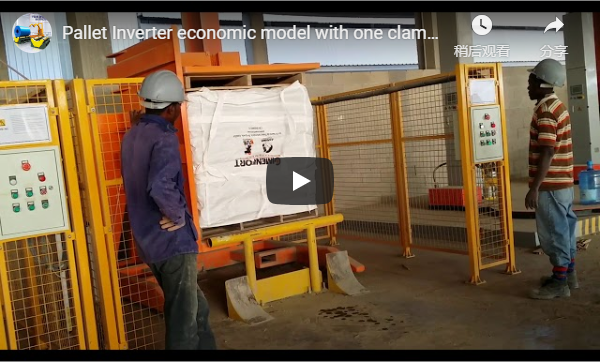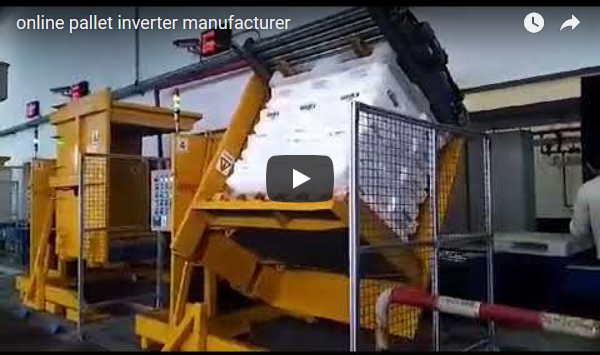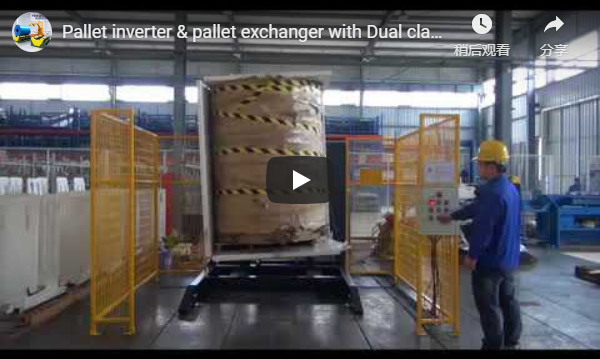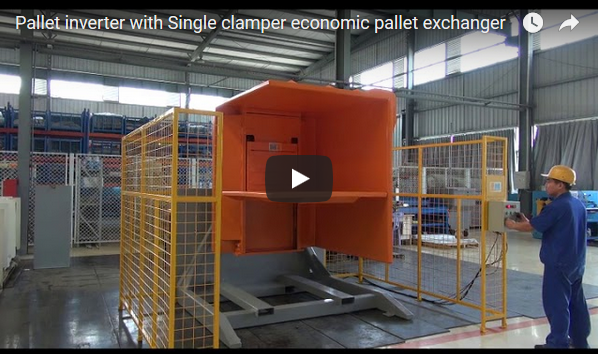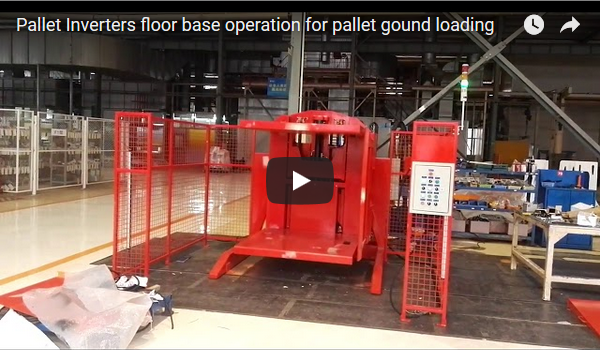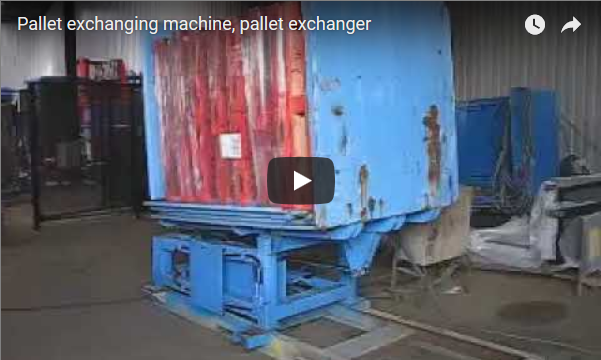Mastering Sub-Zero Logistics: A Technical Deep Dive into the Cold Storage Pallet Inverter
Handling materials in cold storage and freezer environments presents unique operational challenges, from maintaining temperature integrity to ensuring worker safety and equipment reliability. Traditional methods of pallet exchange or accessing bottom layers often prove inefficient and risky in sub-zero conditions. This is where specialized equipment becomes indispensable.
The cold storage pallet inverter, also known as a frozen product pallet changer, emerges as a pivotal solution, engineered specifically to operate reliably in demanding low-temperature warehouses. It automates the inversion, exchange, and unloading of pallets, significantly boosting workflow efficiency while protecting valuable frozen inventory.
1. The Unique Challenges of Cold Storage Pallet Handling
Operating within cold storage facilities (often reaching -30°C / -22°F or lower) introduces hurdles standard equipment isn't designed for:
- Material Brittleness: Standard metals and plastics can become brittle and fail in extreme cold.
- Lubrication Issues: Conventional lubricants thicken or freeze, hindering mechanical movement.
- Condensation & Icing: Temperature fluctuations can cause condensation and ice build-up on components, leading to malfunctions.
- Operator Safety: Manual handling in bulky freezer gear increases risks of strains and accidents.
- Product Integrity: Minimizing exposure time outside controlled temperatures is crucial for maintaining the cold chain.
A dedicated cold storage pallet inverter addresses these points through specialized design and construction.
2. Unveiling the Cold Storage Pallet Inverter: Design & Structure
Built to withstand the rigors of freezer environments, these machines incorporate specific design philosophies:
- Robust Framework: Utilizes low-temperature tolerant steel alloys and often features enhanced structural reinforcement to handle potentially ice-bound or uneven loads.
- Specialized Components: Employs hydraulic systems with low-temperature fluids, sealed electrical enclosures (IP65 or higher), and cold-resistant wiring and sensors.
- Surface Treatment: Often features stainless steel cladding or specialized coatings (like galvanization or powder coating) to resist corrosion exacerbated by temperature cycles and potential moisture.
- Insulation Considerations: Key operational components might be strategically insulated or heated to ensure consistent performance.
3. Key Components Deep Dive
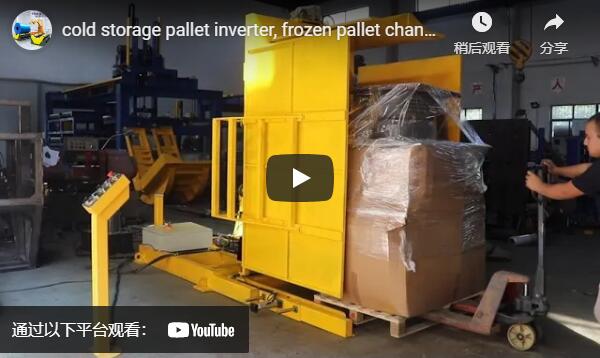
Understanding the core components reveals the machine's sophisticated operation:
- Dual Clamping Plates: These secure the load from top and bottom before rotation. They typically feature adjustable pressure control to accommodate varying load types and prevent crushing damage to packaging. Surfaces may be lined with non-slip, low-temperature resistant materials.
- Heavy-Duty Rotation Mechanism: Usually hydraulically or electrically driven, providing smooth, controlled 180° inversion. Utilizes robust bearings and drive systems engineered for high torque and low-temperature reliability.
- Lifting/Lowering Frame: Integrates with the clamping and rotation system to safely lift the load, perform the inversion, and gently lower it back down.
- Control System: Often PLC-based with a user-friendly HMI (Human-Machine Interface), allowing operators to initiate cycles, monitor progress, and adjust parameters. Features robust emergency stops and safety interlocks.
- Safety Features: Essential in automated machinery, including perimeter guarding, light curtains, pressure sensors, and lock-out/tag-out provisions, all designed to function reliably in the cold.
4. Operational Workflow: A Step-by-Step Look
The typical operational cycle streamlines pallet handling:
- Loading: An operator uses a forklift or pallet truck to position the palletized load (e.g., frozen goods) onto the inverter's loading platform or directly within the clamping zone.
- Clamping: The operator initiates the cycle via the control panel. The side clamping plates engage, securely holding the pallet and product together.
- Lifting & Inversion: The machine slightly lifts the clamped load (if floor-loaded model) and then smoothly rotates it 180 degrees. The controlled motion ensures load stability, even with frozen items.
- Lowering & Release: The inverted load is gently lowered. The clamping plates retract.
- Pallet Exchange: The original (now top) pallet can be easily removed. A new target pallet (e.g., a shipping pallet, plastic pallet, or slip sheet) is placed on top of the inverted load.
- Re-Inversion (Optional): The clamping, rotation, and lowering sequence is repeated to return the product to its original orientation, now sitting on the new pallet.
- Unloading: The operator removes the newly palletized load.
5. Technical Specifications Overview
While exact specifications vary by model and manufacturer, typical performance data includes:
- Load Capacity: 1000 kg - 2000 kg (2200 lbs - 4400 lbs)
- Pallet Size Compatibility: Standard sizes (e.g., 1200x800mm, 1200x1000mm, 48"x40") often with adjustable clamping ranges.
- Operating Temperature Range: Designed for continuous operation down to -25°C or -30°C (-13°F or -22°F).
- Rotation: 180° standard inversion.
- Cycle Time: Approximately 60 - 120 seconds per complete inversion cycle (load/unload time excluded).
- Power Requirements: Typically 400V/3Ph/50Hz or 480V/3Ph/60Hz, depending on regional standards.
- Control System: PLC control with HMI panel.
- Materials: Often incorporates stainless steel, galvanized steel, or low-temperature carbon steel with specialized coatings.
6. Tangible Benefits & ROI in Cold Chain Logistics
Investing in a cold storage pallet inverter delivers significant advantages:
- Enhanced Efficiency: Dramatically reduces the time and labor required for pallet exchange, load transfer, or accessing bottom layers compared to manual methods.
- Improved Safety: Eliminates hazardous manual lifting and turning of heavy, potentially slippery frozen loads, reducing injury risks.
- Product Protection: Gentle, controlled handling minimizes damage to sensitive packaging and products during inversion.
- Operational Flexibility: Enables quick switching between wood, plastic, or CHEP pallets; facilitates easy order picking from bottom layers; simplifies freezer slotting and warehouse organization.
- Reduced Contamination Risk: Allows easy removal of damaged or contaminated pallets (e.g., broken wood) without destacking product.
- Cold Chain Compliance: Minimizes the time products spend being handled, helping maintain temperature integrity.
7. Real-World Application & User Experience Insights
From frozen food distribution centers to pharmaceutical cold storage, these inverters are becoming critical infrastructure. Users often report:
- Ease of Use: Modern interfaces are typically intuitive, requiring minimal operator training.
- Reliability: Machines designed specifically for cold environments demonstrate higher uptime compared to standard equipment retrofitted or used outside design parameters.
- Maintenance Considerations: Regular checks on hydraulic fluids (low-temp specific), seals, and electrical connections are crucial. Planned maintenance schedules are vital for longevity in harsh conditions.
- Integration Potential: Can be integrated into automated conveyor lines or work in conjunction with AGVs (Automated Guided Vehicles) for fully automated handling solutions.
This specialized pallet inverter provides a robust handling solution for automatic pallet inverter machines within the demanding context of cold storage and freezer warehouses. Its controlled movements, durable construction, and focus on safety help maintain product integrity while significantly improving workflow and productivity by streamlining essential pallet exchange and load handling processes.
More information for relative cold storage pallet inverter

